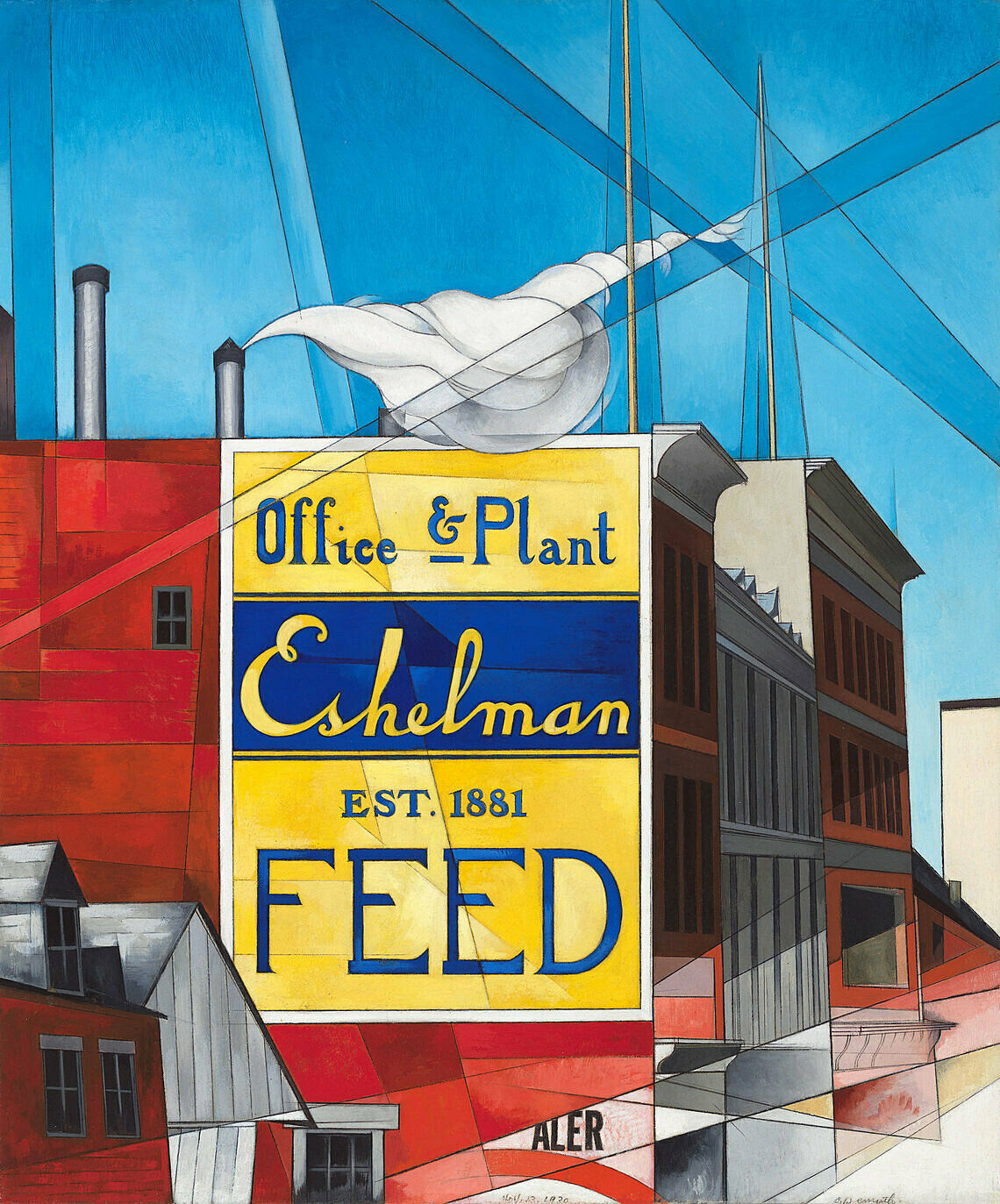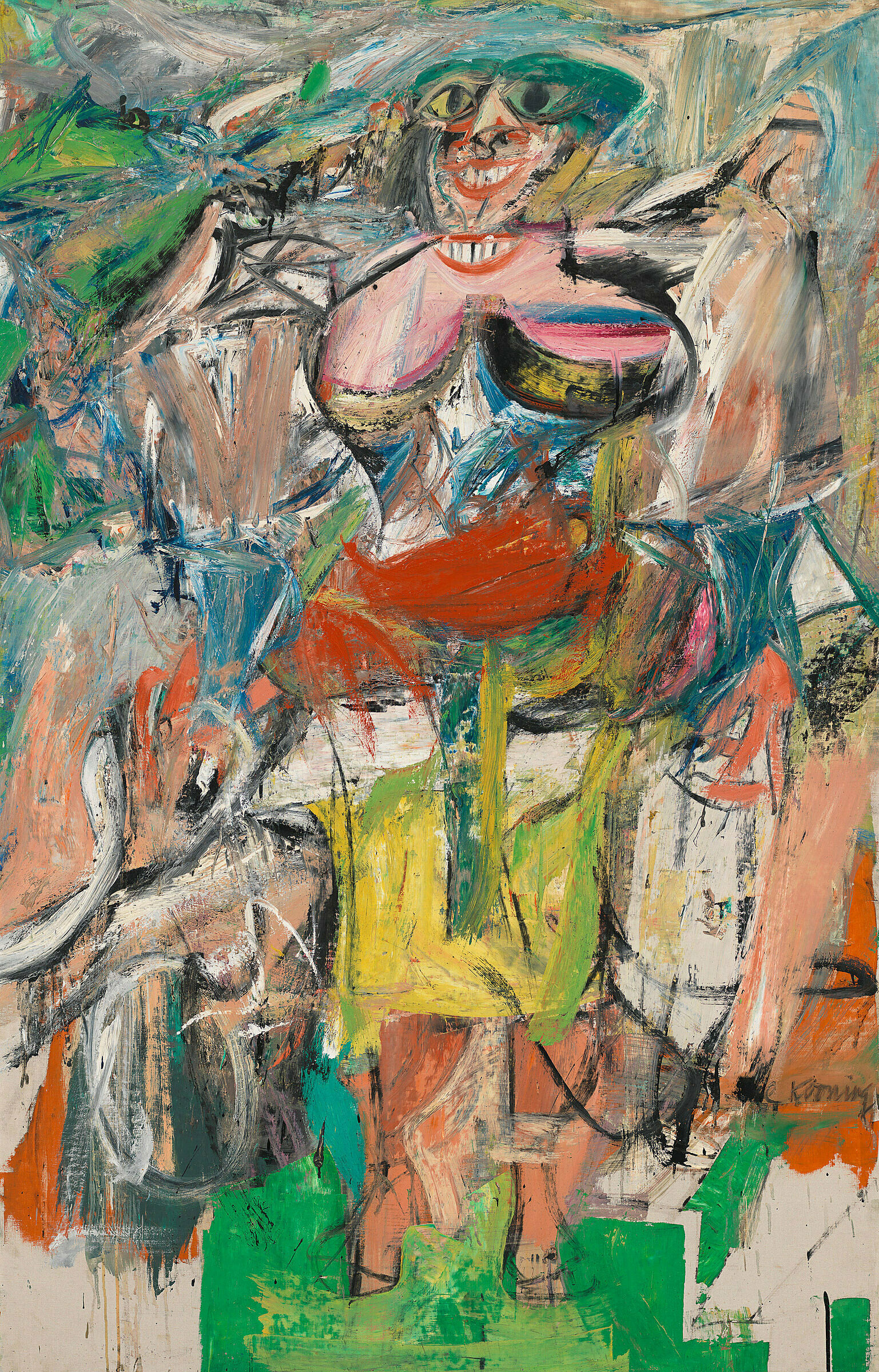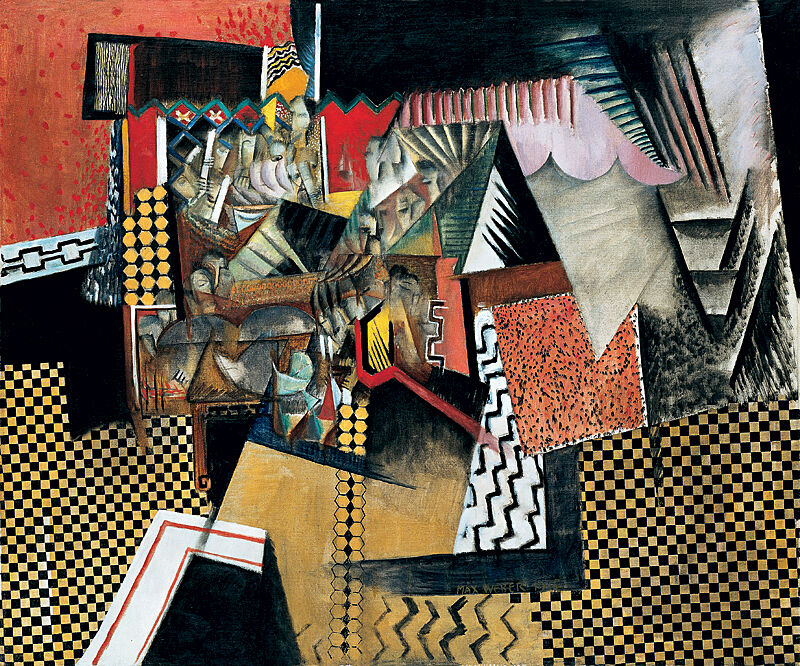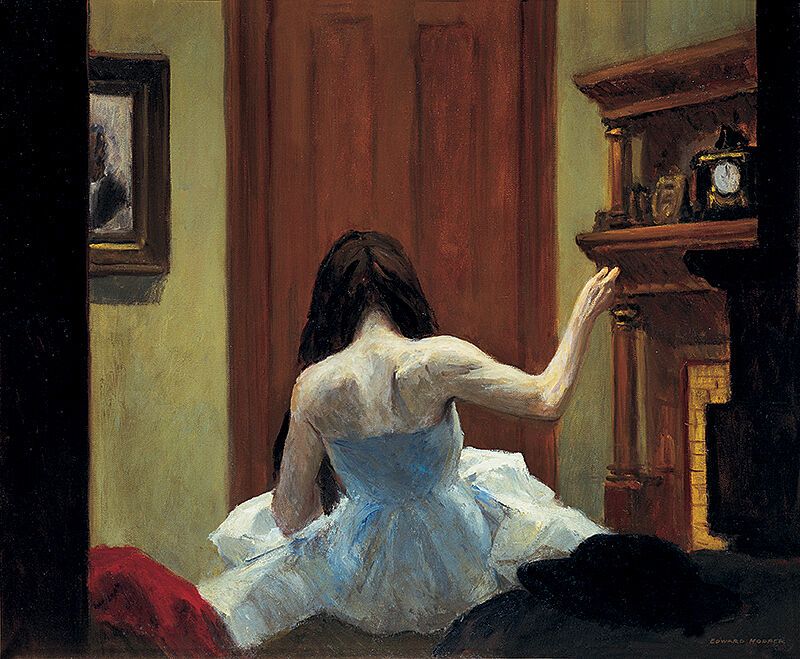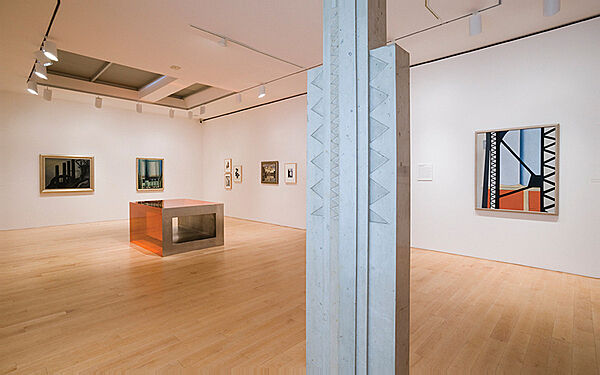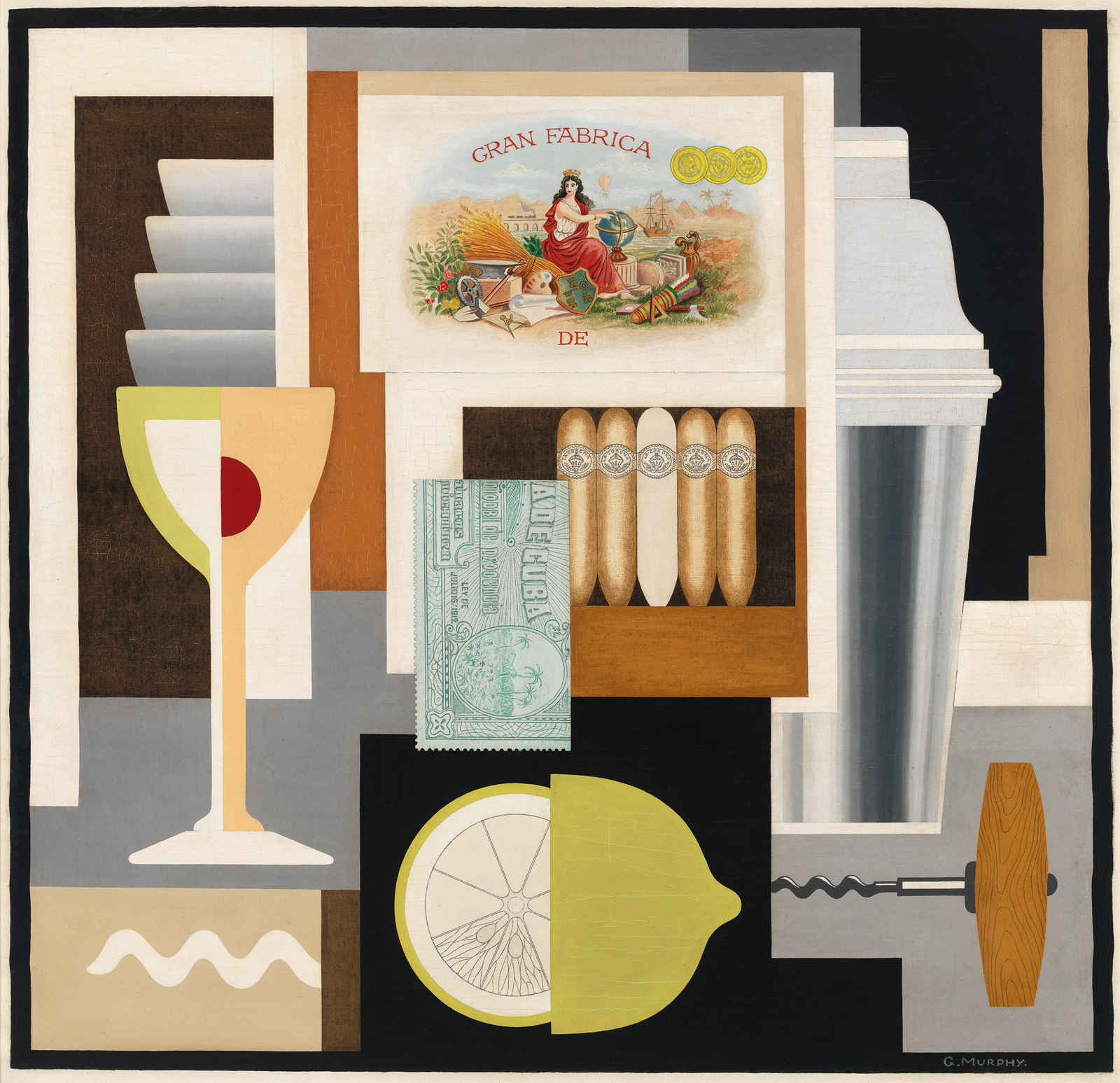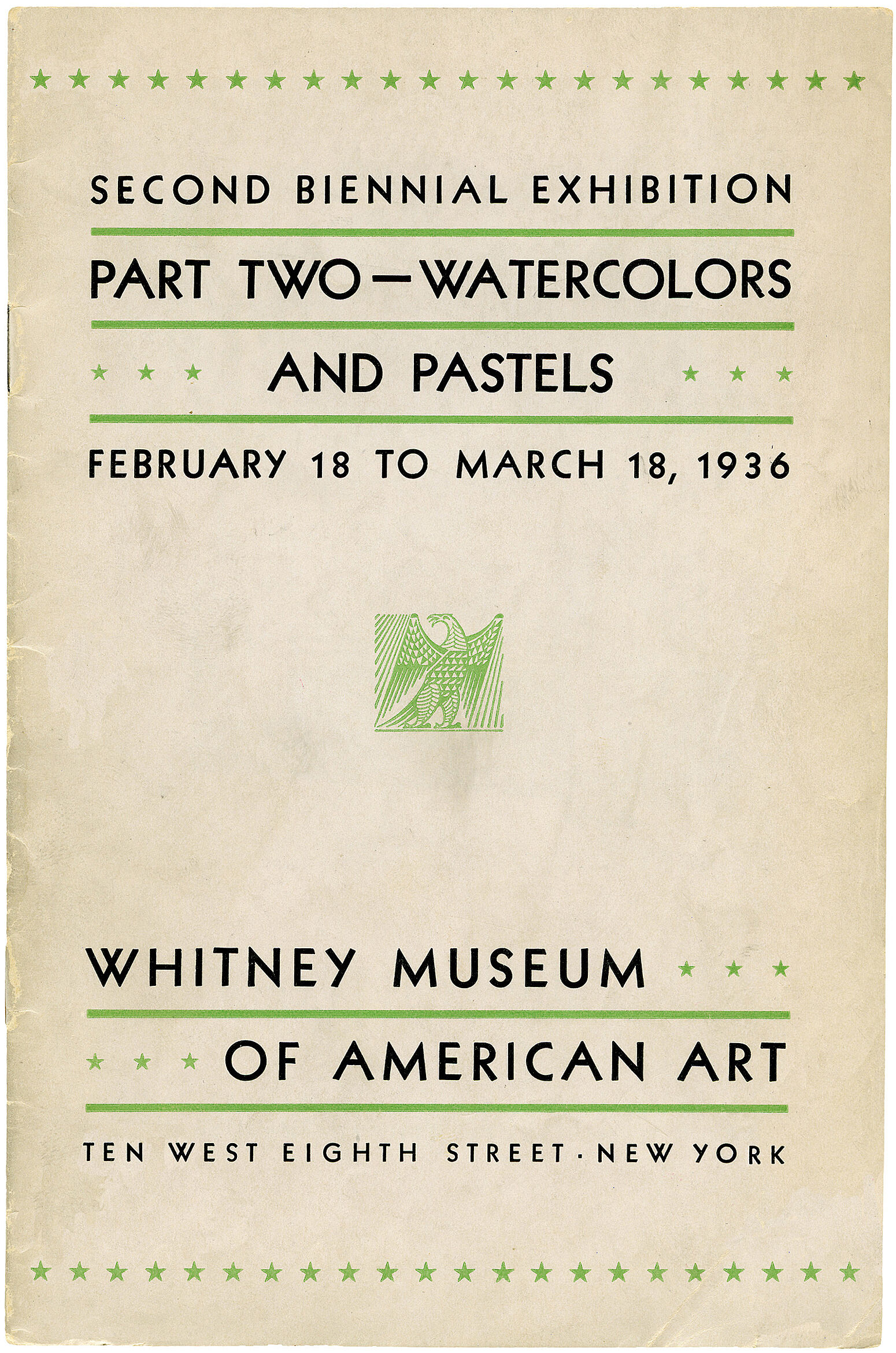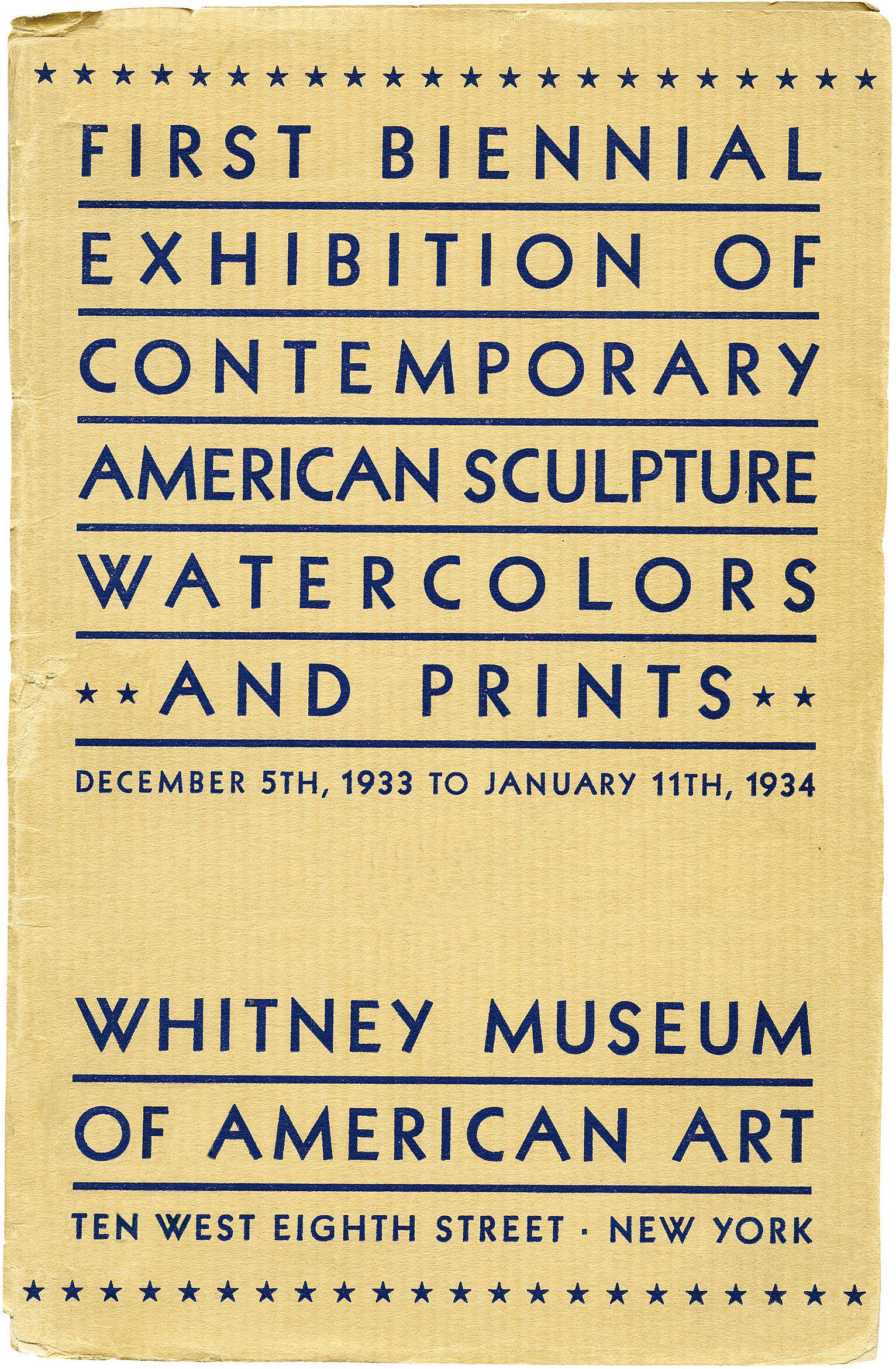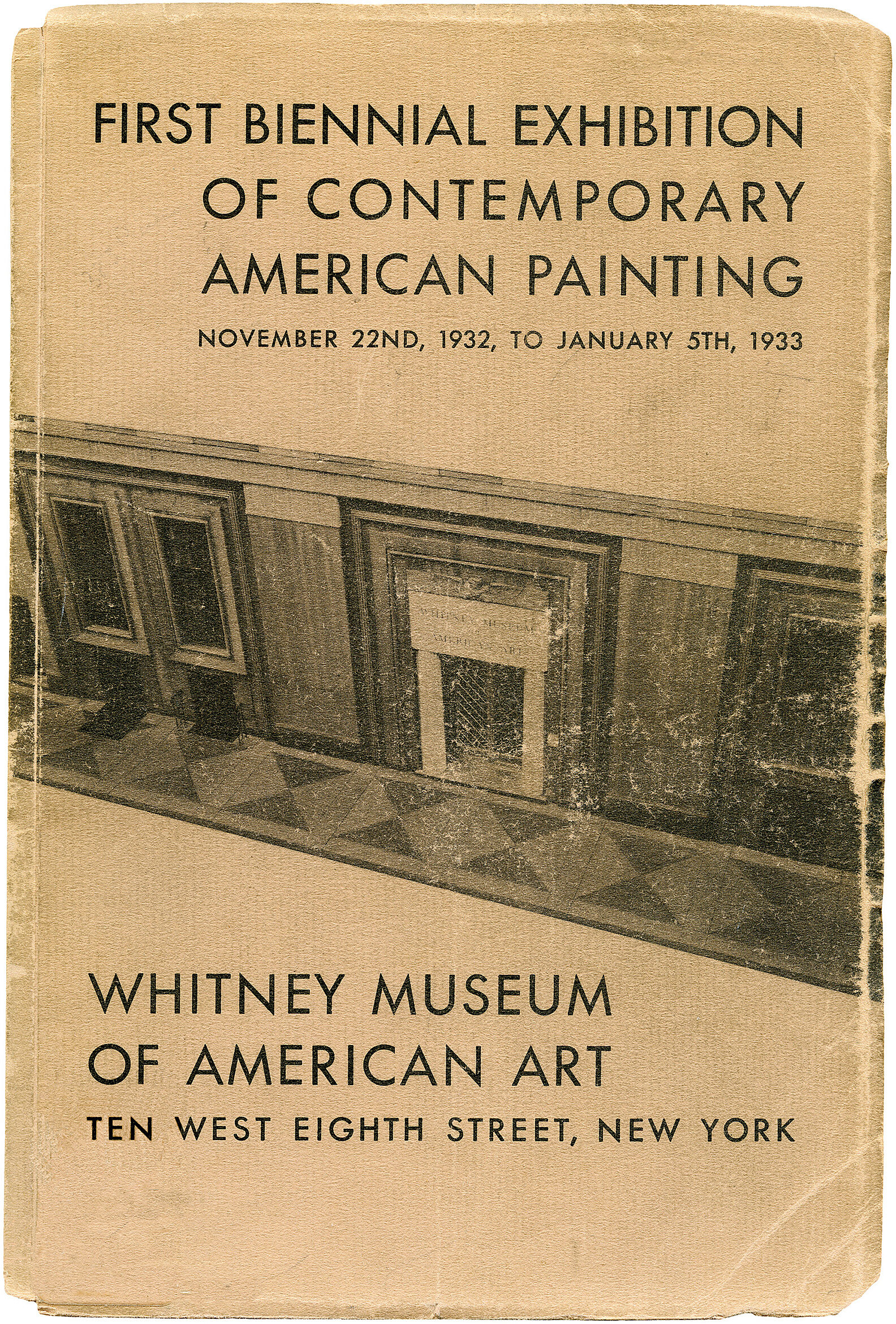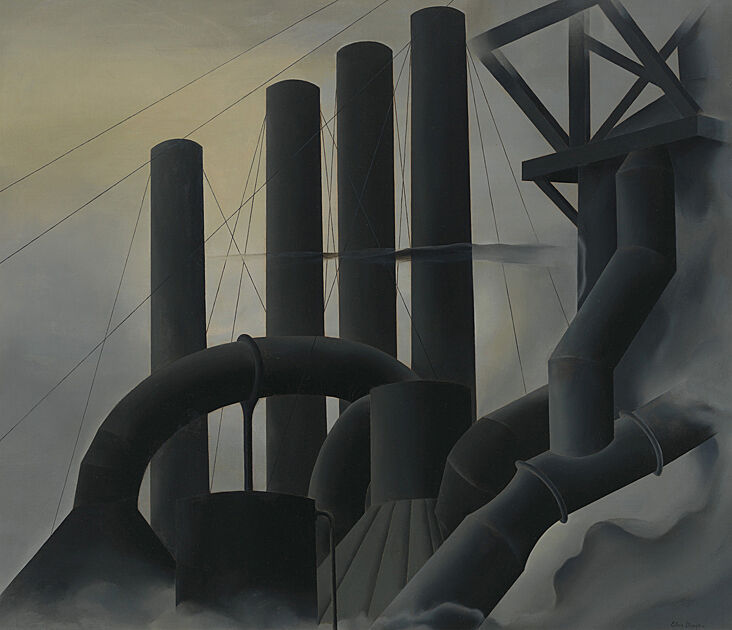Elsie Driggs
1898–1992
One of few female artists to achieve critical and commercial success in the 1920s, Elsie Driggs was associated with the Precisionists, an influential group of artists, including Charles Demuth and Charles Sheeler, whose paintings used strong geometric forms and precise lines to depict the nation’s burgeoning industrial landscape. Driggs studied at the progressive Art Students League in New York and in the early 1920s traveled through Italy to study the masters of the Italian Renaissance. Although she exhibited regularly and in 1932 was included in the Whitney’s first Biennial exhibition, she turned to making murals for the WPA and to watercolors after moving to rural New Jersey in 1936. A new generation of artists and scholars rediscovered her work after she began showing mixed-media constructions in the late 1960s.
Pittsburgh grew out of the memory of an evening train ride Driggs had taken as a child past the city’s steel mills. Years later, recalling the sulfurous hues emitted from the spewing smokestacks, she returned to make studies for a painting. Since the Bessemer process that created the smoky discharge was no longer being used and her requests to visit inside the factories were denied, she instead sketched the buildings of the Jones and Laughlin mill from a height, lured by what she described as their “great velvet forms.” Driggs called the painting her “Piero della Francesca,” an atmospheric, devotional image for the twentieth century. It was followed in 1927 by a succession of canvases, such as Blast Furnaces and The Queensborough Bridge, that similarly sought to capture America’s newfound faith in technology and progress.
Introduction
Elsie Driggs (1898 – July 12, 1992 in New York City) was an American painter known for her contributions to Precisionism, America's one indigenous modern-art movement before Abstract Expressionism, and for her later floral and figurative watercolors, pastels, and oils. She was the only female participant in the Precisionist movement, which in the 1920s and 1930s took a Cubist-inspired approach to painting the skyscrapers and factories that had come to define the new American landscape. Her works are in the collection of the Whitney Museum of American Art, the Houston Museum of the Fine Arts, the Fine Arts Museums of San Francisco, the James A. Michener Art Museum in Pennsylvania, and the Columbus Museum of Art, among others. She was married to the American abstract artist Lee Gatch.
Wikidata identifier
Q3051756
Information from Wikipedia, made available under the Creative Commons Attribution-ShareAlike License . Accessed November 25, 2025.
Roles
Artist, painter
ULAN identifier
500012280
Names
Elsie Driggs
Information from the Getty Research Institute's Union List of Artist Names ® (ULAN), made available under the ODC Attribution License. Accessed November 25, 2025.


